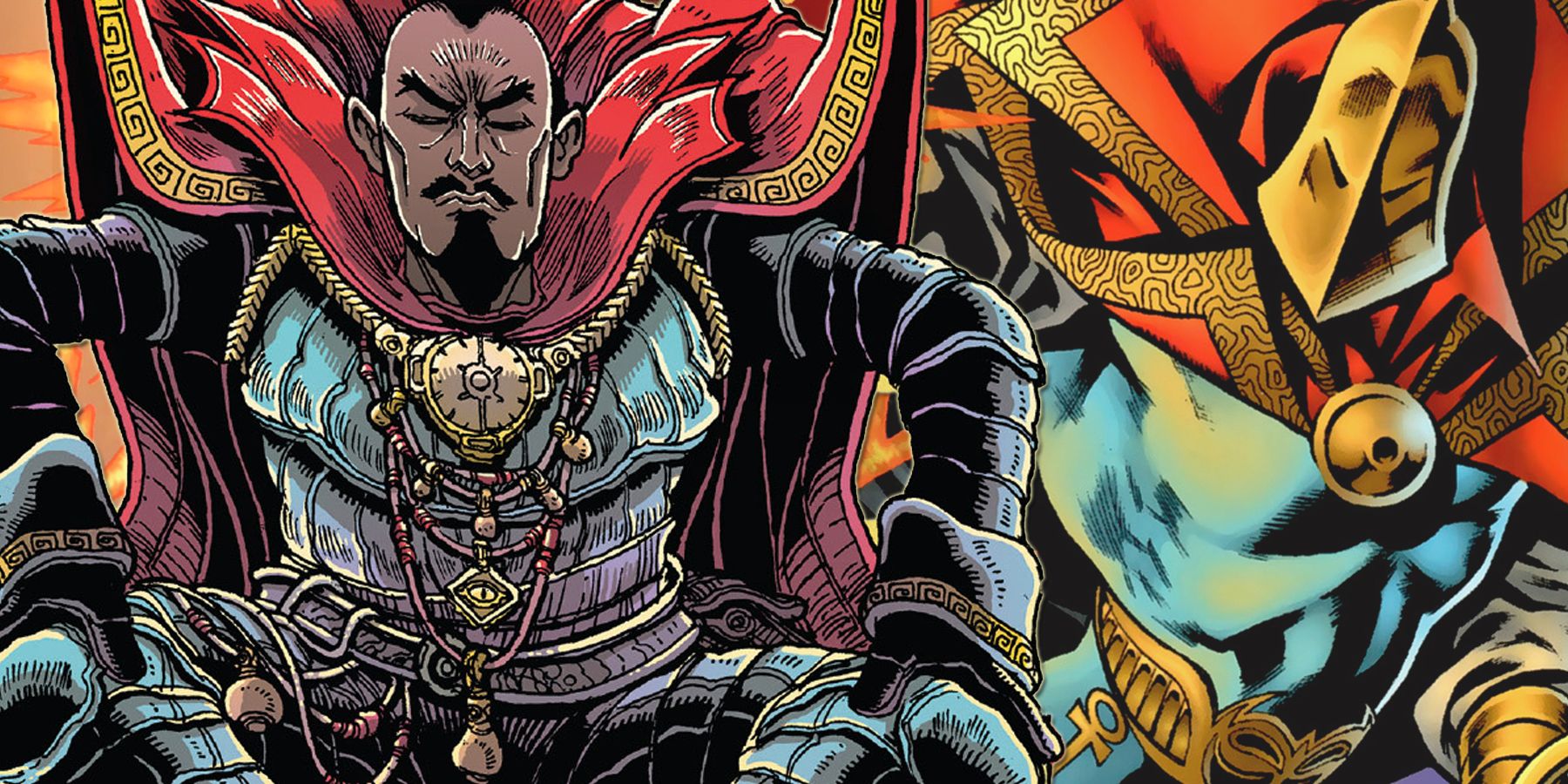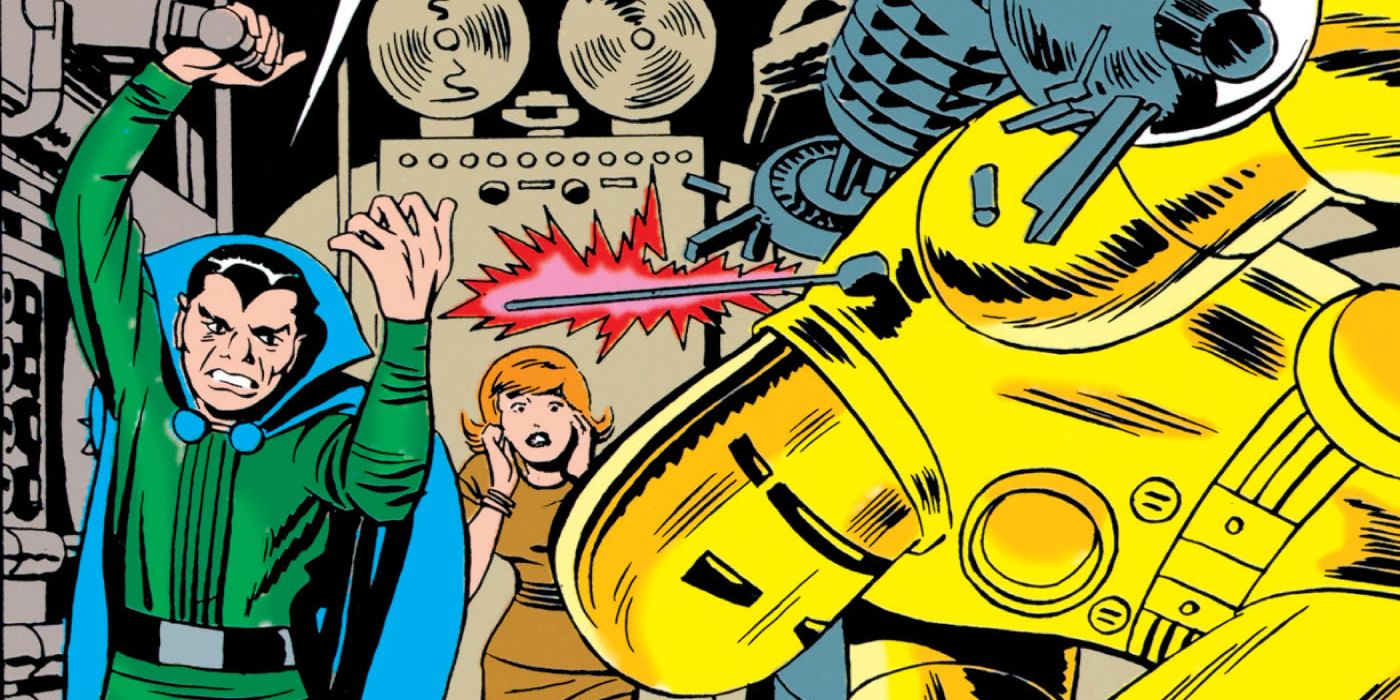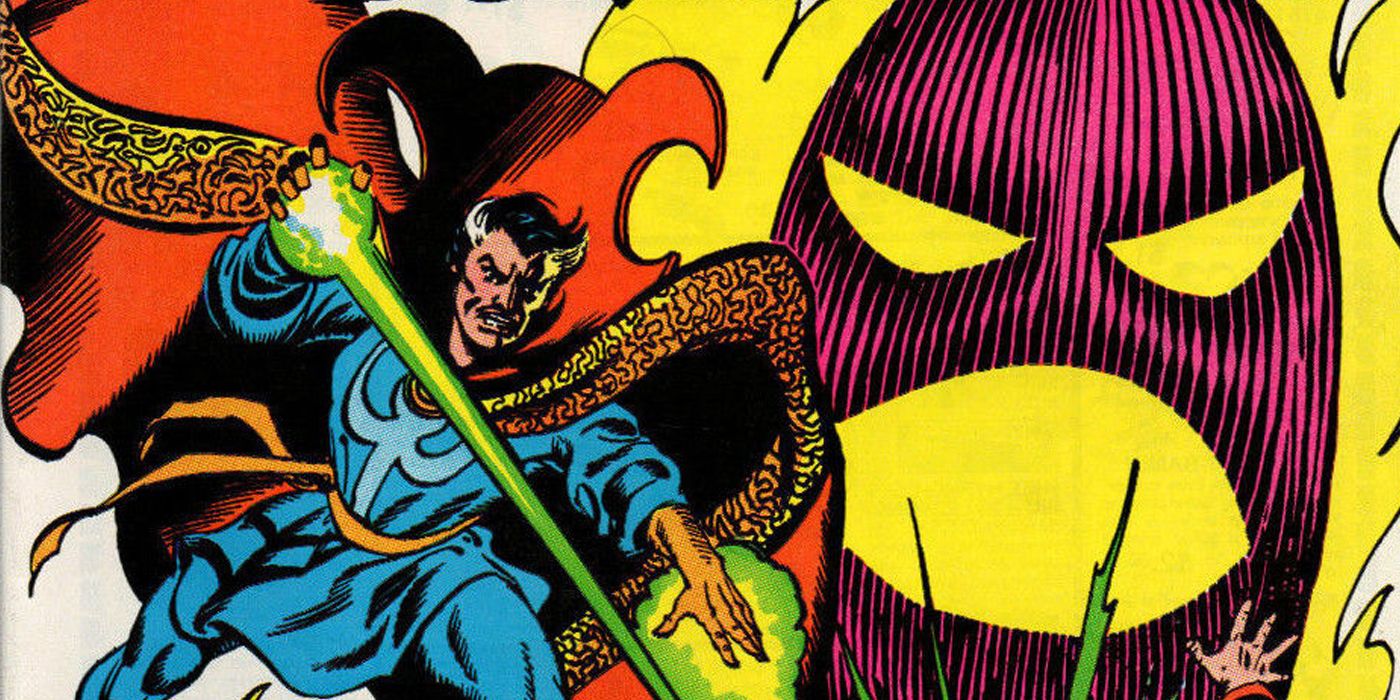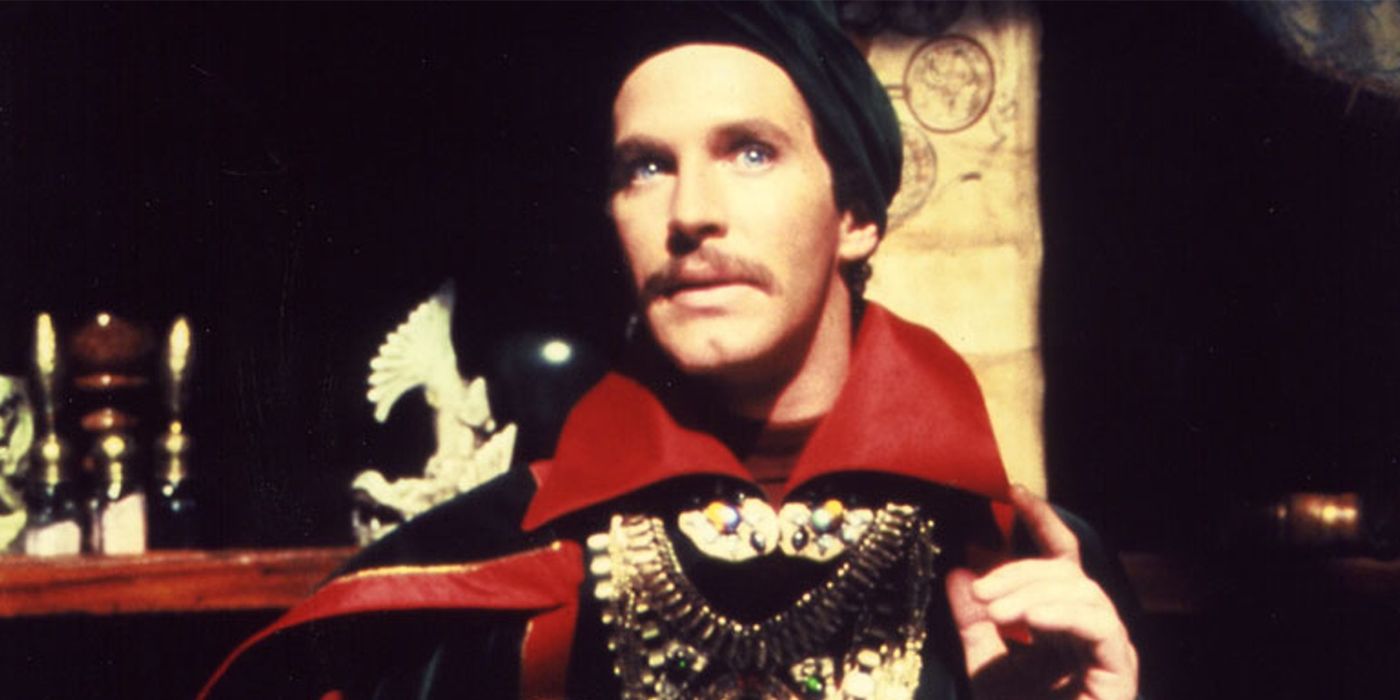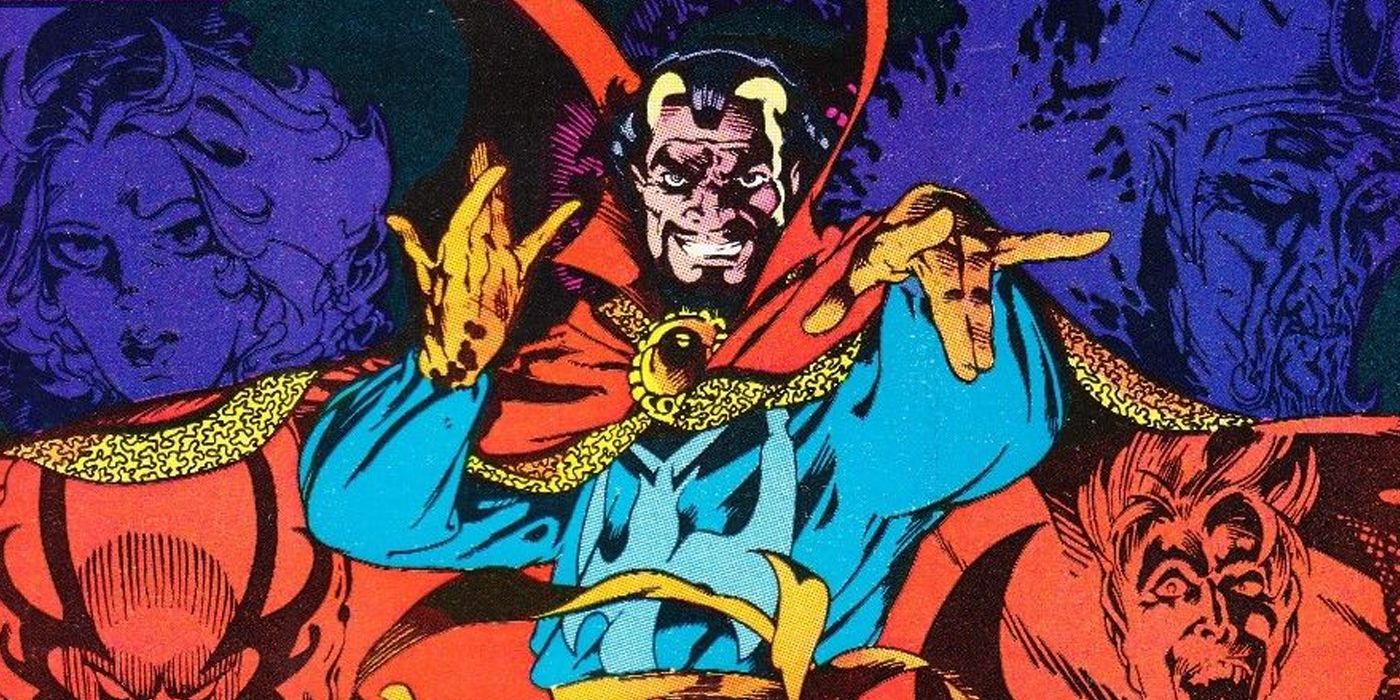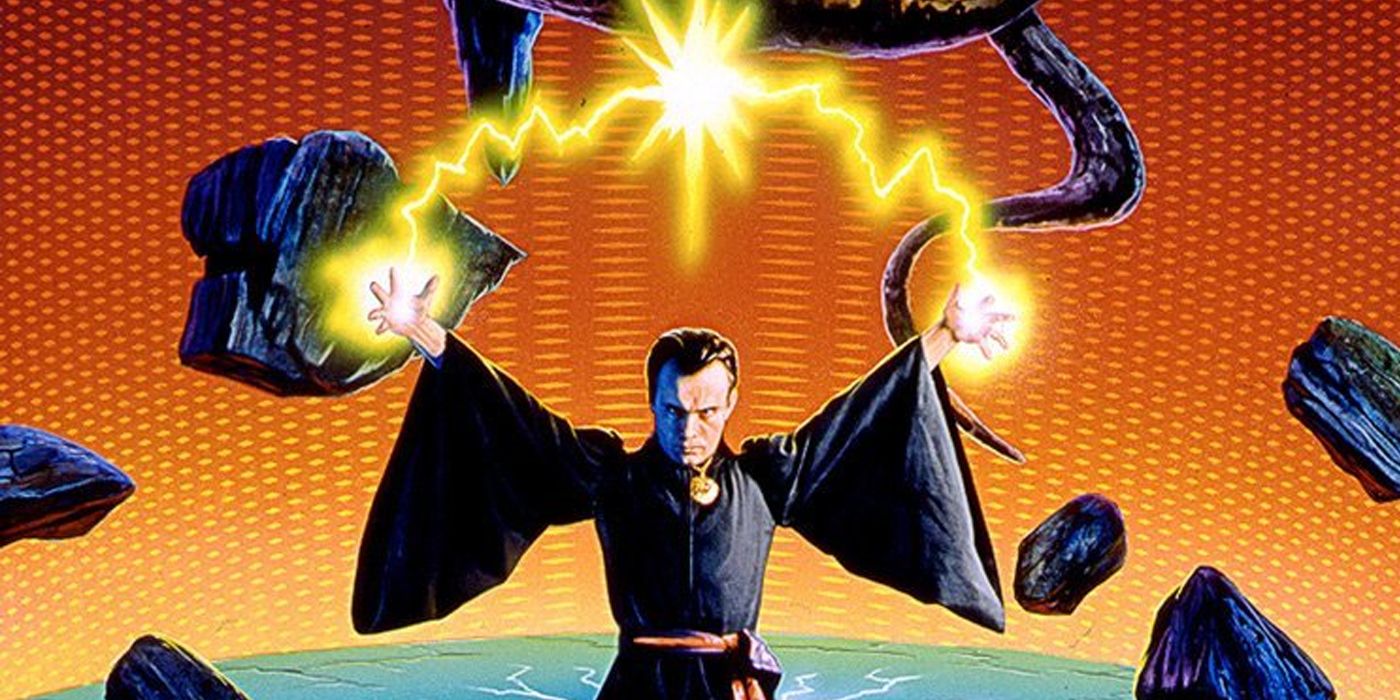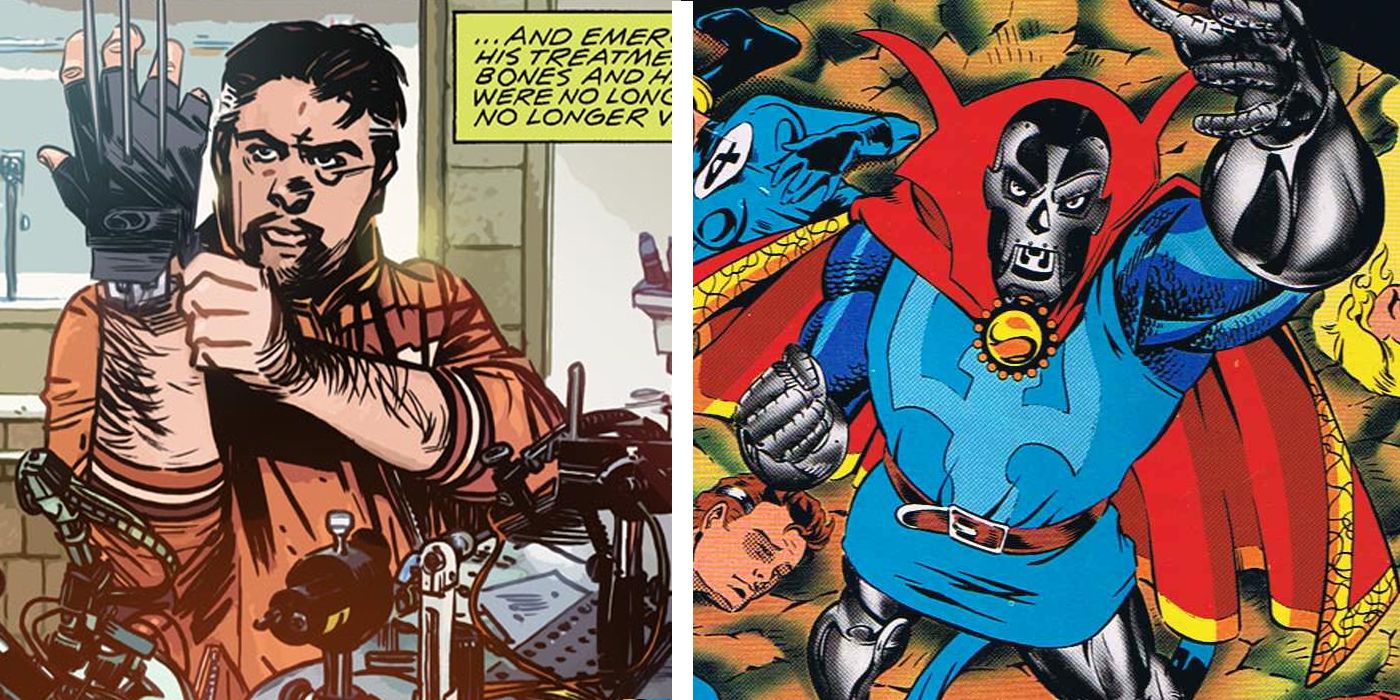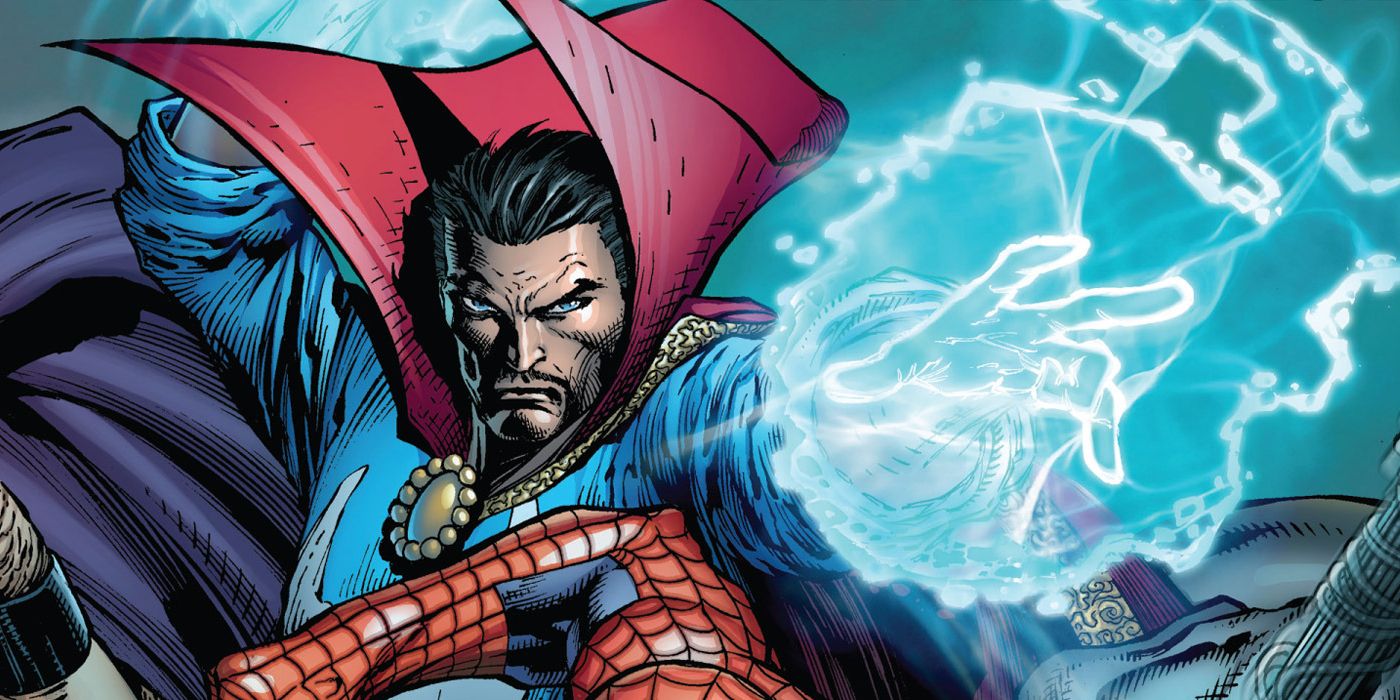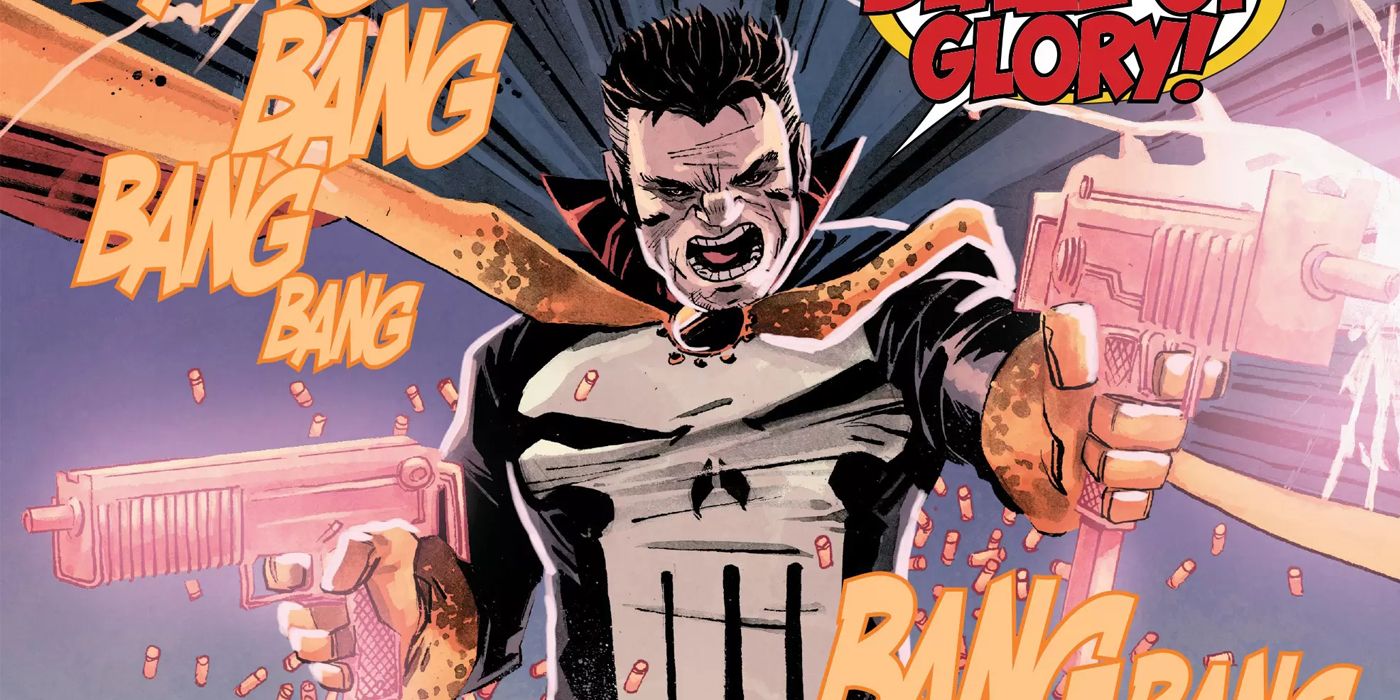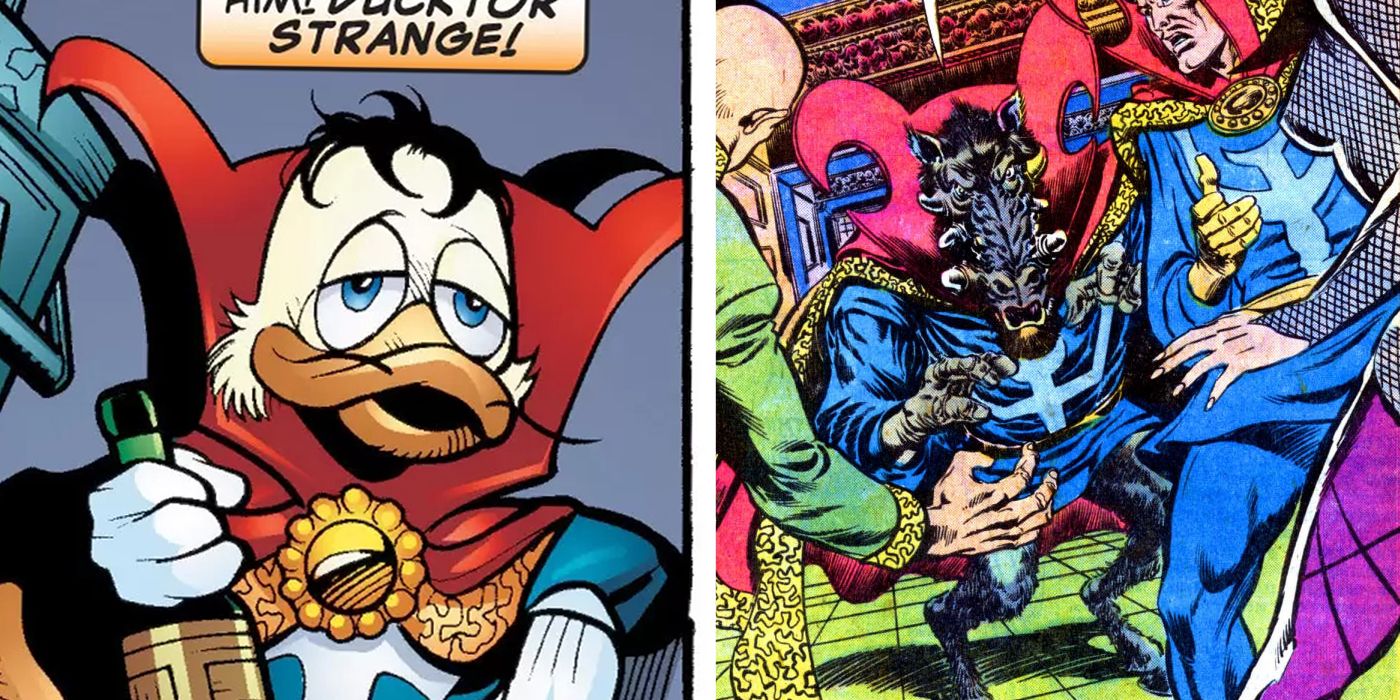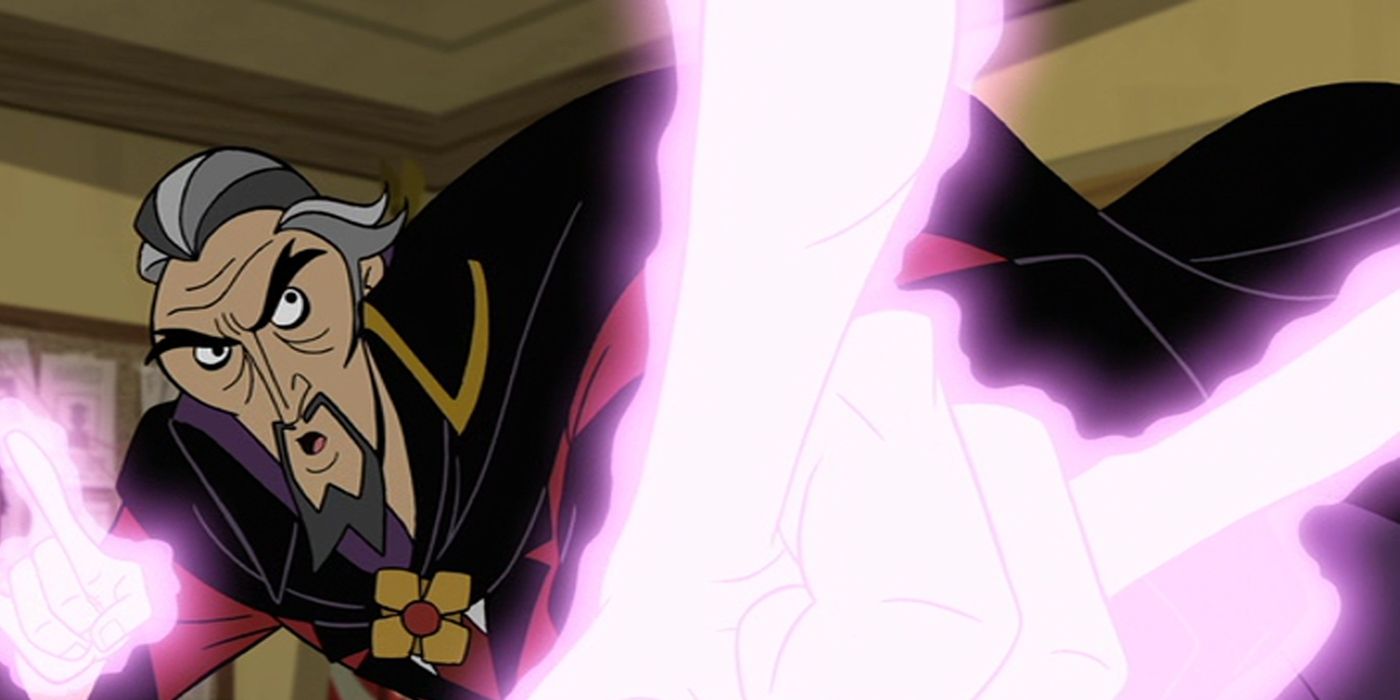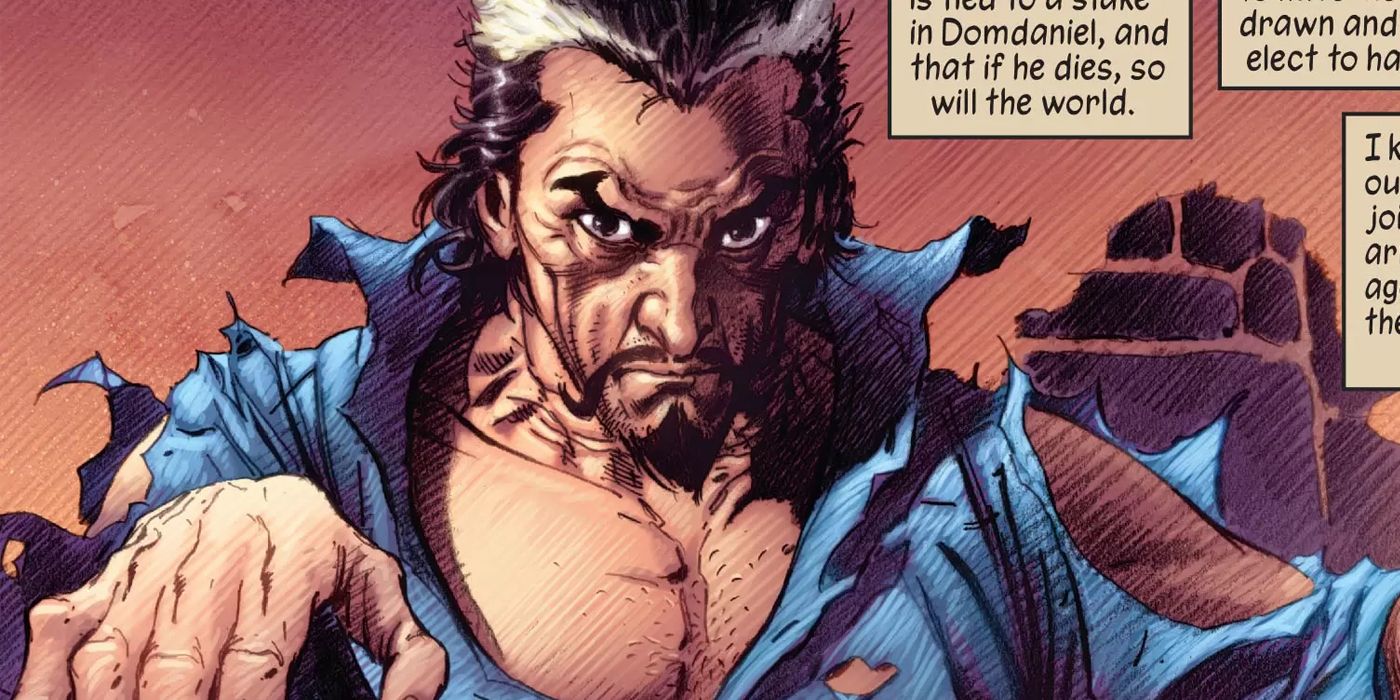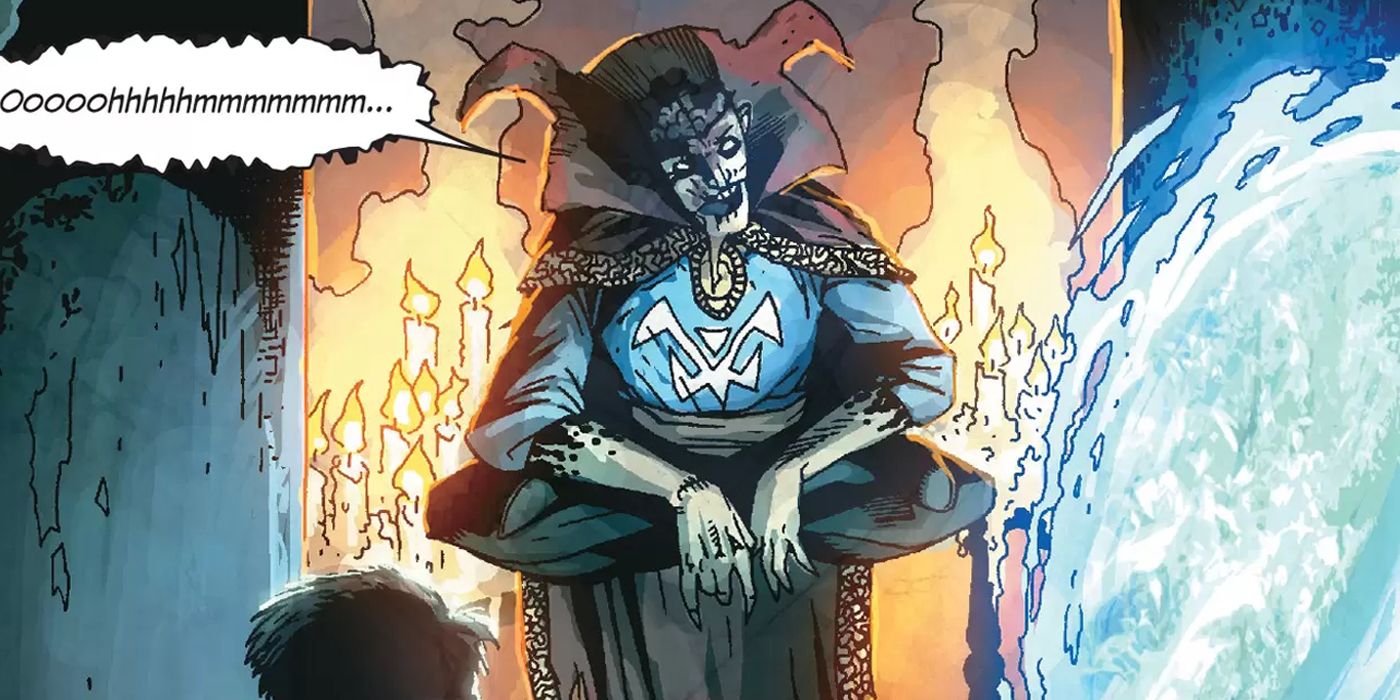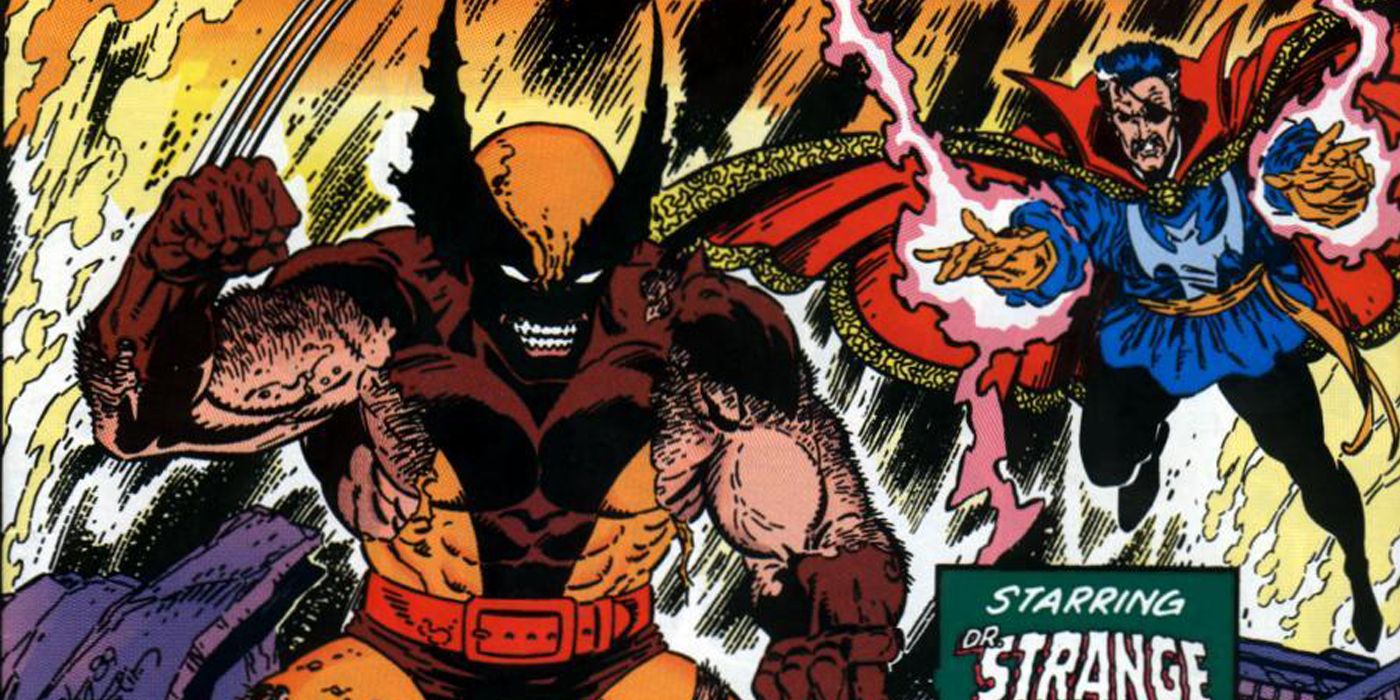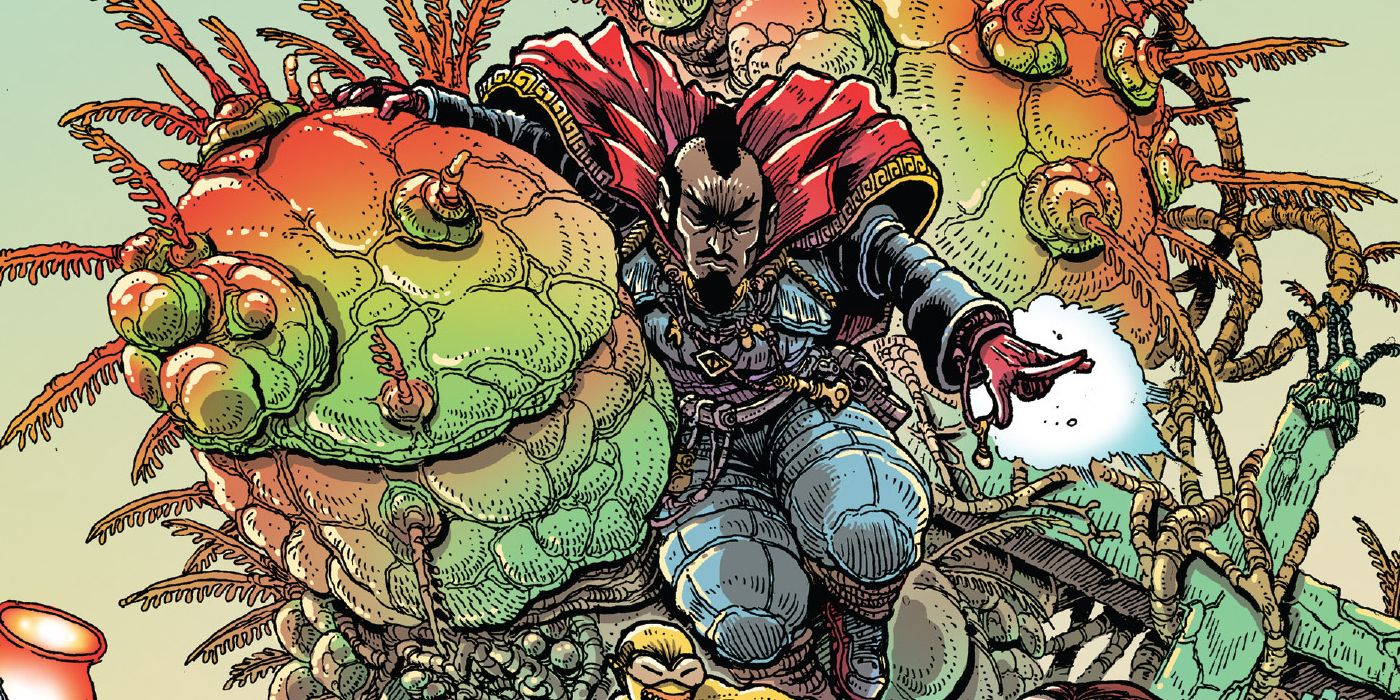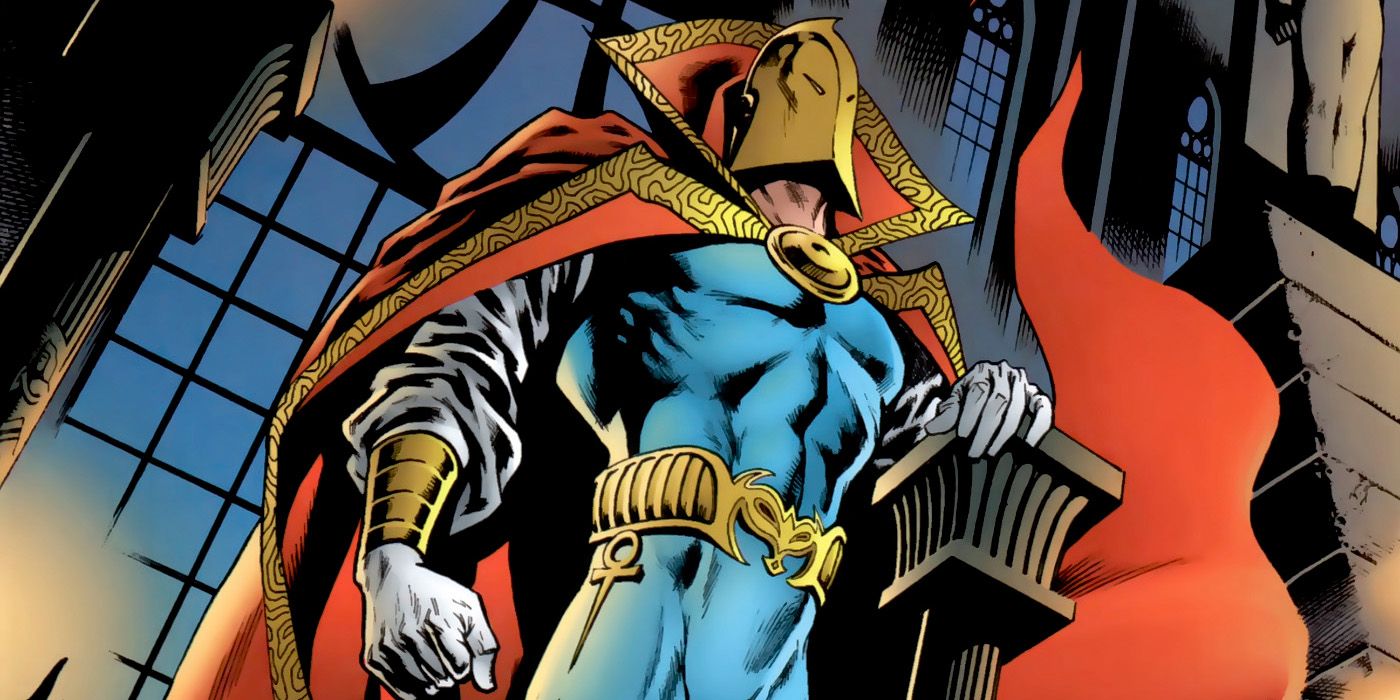As the Master of the Mystic Arts, Doctor Strange goes into some pretty weird territory on a pretty regular basis. Given the trippy, psychedelic nature of the character’s regular stories, other versions of the Sorcerer Supreme can get even more out there. Even “Doctor Strange” director Scott Derrickson has said that his “Doctor Strange” film will introduce the idea of “the multiverse” to the Marvel Cinematic Universe.
RELATED: Strange History: The Long, Strange Journey of Doctor Strange
Now, CBR has put together a list of some of the strangest iterations of Doctor Strange. For this list, we’re drawing from official alternate realities and parallel worlds from the Marvel Comics multiverse, but we’re also looking at pastiches and homages that clearly reference Doctor Strange. Even with Strange’s film debut movie on the way, these offbeat versions of the character aren’t likely to show up on a big screen any time soon.
15 The Original Dr. Strange
Stephen Strange wasn’t the first Marvel character to call himself “Doctor Strange.” In 1963’s “Tales of Suspense” #41, by Stan Lee, R. Berns and Jack Kirby, Carlo Strange made his debut in one of Iron Man’s earliest adventures. This Dr. Strange was already a genius villain when he was struck by lightning which “increased the electrical energy” of his mind, making him even smarter. In Dr. Strange’s first story, Carla, his daughter, helped Iron Man recharge his armor with flashlight batteries and take down the villain.
After his initial appearance, Dr. Strange seemed poised to become a major threat within the early Marvel Universe. When Steve Ditko brought the concept that would become the familiar Doctor Strange to Stan Lee, they originally wanted to call the character Mister Strange. However, Lee thought that name was too close to Mr. Fantastic, and he inadvertently reused the name Doctor Strange for the new character. The first Dr. Strange has only appeared sporadically since his debut and remains a footnote of 1960s Marvel continuity.
14 Disciple of Dormammu
Marvel’s anthology series “What If?” looked at the far-reaching, often universe-destroying consequences, of slight changes to Marvel’s official continuity. In 1979’s “What If?” #18, Peter Gillis and Tom Sutton, regular “Doctor Strange” collaborators, looked at what would’ve happened if Doctor Strange had become a disciple of Dormammu, ruler of the Dark Dimension, instead of the Ancient One.
In this story, Dormammu instructed the Ancient One’s student Baron Mordo to heal Stephen Strange’s hands when he sought out the Ancient One’s help in recovering from a car accident. Having been healed, Strange returned to his life as a vain surgeon before Mordo manipulated him into becoming Dormammu’s student. The Ancient One and the Vishanti, Marvel’s cosmic mystical entities, gave Strange the Eye of Agamotto to help him see the true nature of the universe. That worked, and Doctor Strange banished Dormammu to his own dimension before becoming a student of the Ancient One. Having mastered both the darker and lighter aspects of the mystic arts, Strange was ultimately appointed Sorcerer Supreme, the universe’s official mystical protector. In regular Marvel continuity, the main Doctor Strange would regain that title for similar reasons after briefly losing it during Brian Michael Bendis’ run on “New Avengers.”
13 Television’s Doctor Strange
In 1978, Doctor Strange starred a somewhat infamous feature length TV movie on CBS. In the movie, Peter Hooten’s Doctor Strange was a psychiatrist who was plunged into the world of magic after his patient Clea Lake was possessed by Jessica Walter's Morgan le Fay. Instead of the Ancient One, Strange trained with Thomas Lindmer, the current Sorcerer Supreme, who told Strange of his family’s mystical heritage. After Strange rescued Clea from the astral plane, Lindmer gave Strange his power and the title of Sorcerer Supreme.
While the pilot never resulted in a series, thanks in part to airing opposite of the landmark mini-series “Roots,” it remained the only live-action interpretation of the character for decades. Between the economical costumes and the focus on Strange’s non-supernatural professional responsibilities, the budgetary and technological constraints of the production show through. But even with the Nameless One, le Fay’s boss, reduced to a puppet, traditional “Doctor Strange” allies like Clea and Wong had meaningful roles to play.
12 Doctor Strange, Med School Professor
In 1983, another Peter Gillis-penned “What If” tale dealt with a different variation on Doctor Strange’s origin. With art by Butch Guice and Sam Grainger, Gillis looked at what would have happened if Baron Mordo had been the Sorcerer Supreme instead of Doctor Strange in “What If” #40. In this version, Mordo was recruited by the Marvel villain Nightmare to keep Strange from becoming a hero and manipulated the Ancient One into naming him Sorcerer Supreme. When Strange arrived to train with the Ancient One, the pair taught him simple meditation techniques and sent him on to his new life as a professor at a medical school.
After suffering from nightmares years later, Strange sought out Mordo’s help, but was betrayed when Mordo trapped him in Nightmare’s Dream Dimension. While Strange meditated his way out, a conflict erupted between Nightmare and Dormammu that left the Ancient One dead. After defeating Mordo, Strange banished both entities to their own dimensions, giving up his life in the process. In a bizarre ending, the ghost of the Ancient One appeared to the ghost of Strange, and took Strange on as his pupil in the afterlife.
11 Doctor Mordrid
The 1992 direct-to-video feature “Doctor Mordrid” originally started out as a feature length Doctor Strange adaption. When Full Moon Entertainment lost the rights to the character, the script was re-written to twist Strange and his companions into original characters. In this story, Anton Mordrid was an alien wizard sent by the Monitor to guard the Earth against the evil wizard Kabal’s efforts to summon beings from the Fourth Dimension. After living as a criminal psychologist and befriending his tenant Samantha, Mordrid fought Kabal and returned to the Monitor’s Magic Dimension.
While it wasn’t an official Strange movie, it maintained several clear connections to the character. Beyond Mordrid, most of the film’s cast played analogues for Strange characters like the Ancient One, Baron Mordo. In the Mordrid costume, Jeffrey Coombs looked more than a little like his Marvel counterpart. The depiction of Mordrid on the VHS cover art even included Strange’s trademark oversize sleeves. Curiously, comics legend Jack Kirby also designed several characters for the film.
10 The Robot Hands of Doctor Strange
In 1993, Dan Slott, Manny Galan, and Mark Stegbauer offered another variation on Doctor Strange’s origin with “What If” #52. In this version of the origin, Doctor Doom became the Ancient One’s student. When Strange arrived on the Ancient One’s doorstep, Doom chopped off his hands and replaced them with robotic Doombot hands and sent him back to his life as a surgeon, still arrogant with the Ancient One’s teachings. After the Ancient One died, Doom became Sorcerer Supreme before being fatally wounded in an encounter with Dormammu. Doom called on Strange to operate on him, but instructed his Doombots to transfer his brainwaves over Strange’s brain and incased Strange’s body in his armor, forcing Strange to become his unwilling host.
A lighter variation on the beginning of this story came in “Bullet Points,” a 2006 J. Michael Straczynski-written alternate reality miniseries. In this world where Steve Rogers never received the Super Solider serum, S.H.I.E.L.D. Director Reed Richards healed Strange’s hands with cybernetic enhancements, which left the aging Ancient One as Earth’s Sorcerer Supreme.
9 Ultimate Doctor Strange
In the Ultimate Marvel Universe, Doctor Strange’s origin is practically the same as his regular continuity counterpart. Ultimately, he married Clea, and they had a son, Stephen Strange Jr. After he mysteriously disappeared, possibly into another dimension, Clea raised Stephen Jr. without telling him about his father’s mastery of the mystic arts. Strange’s former assistant Wong taught his friend’s son the ways of the mystic arts. After this, the young Strange sold himself as a new age guru in his civilian life and fought crime with his largely unrefined abilities in just over a dozen appearances.
Ultimate Doctor Strange’s most noteworthy moment came in the 2009 crossover “Ultimatum,” when he suffered one of the more undignified deaths in comics. In the notoriously sadistic story, Strange was killed after Dormammu was set free in the chaos that Magneto’s final assault on the world. Dormammu wrapped Strange in his own cloak until his head turned purple and burst, graphically illustrated by David Finch and Danny Miki. It’s worth noting that if the elder Ultimate Doctor Strange was trapped in another dimension, he could conceivably be one of the Ultimate Universe’s few surviving characters.
8 The Soldier Supreme
The Punisher and Doctor Strange make an odd duo, but the characters have found close allies in each other in a few notable alternate realities. In 1991’s “What If” #24, Dracula turned all of the X-Men into vampires before being overthrown by Wolverine. After most of Marvel’s heroes were turned into vampires or killed, the spirit of a deceased Doctor Strange possessed the Punisher, who had become an expert vampire slayer. The possessed Punisher was fatally wounded, but was able to convince Wolverine to kill the rest of his vampires.
In 2015’s “Secret Wars,” Doctor Strange served as Doctor Doom’s chief sheriff in Doom’s Battleworld. But in “Secret Wars: Battleworld” #1, by Josh Williamson and Mike Henderson, the spirit of a different alternate reality Doctor Strange possessed the Punisher after being bitten by vampires. The possessed Punisher fought Doom’s forces throughout realities with a combination of Strange’s mysticism and Punisher’s weaponry as the awesomely-named “Soldier Supreme.” Unfortunately, the Punisher was killed by the end of the short story, but not before Strange could possess the body of an evil Wolverine.
7 Doctor Stranger Yet and the Mallard of the Mystic Arts
Several animal-based incarnations of Doctor Strange have appeared both in and out of the animal-centric versions of the Marvel Universe. In the 1977 story, “The Creator Chonicles,” masterminded and partially drawn by Jim Starlin, Doctor Strange came into conflict with the Creators, a group of magicians backed by the cosmic entity the In-Betweener. After turning several stars into living beings, the Creators unleashed their champion Doctor Stranger Yet, a humanoid boar that had the costume and all of the powers of Doctor Strange. Strange and Clea ultimately defeated the creature, who seemed to disappear at the end of the story.
Versions of Doctor Strange also popped up in some of Marvel’s animal-centric worlds. Ducktor Strange was the heavy-drinking “Mallard of the Mystic Arts” from “Howard the Duck’s” Duckworld. Despite his drunkenness, he was one of the few who could transport people to and from Duckworld. In a more kid-friendly title, the world of “Peter Porker, The Spectacular Spider-Ham” featured Croctor Strange, who was simply a crocodile that practiced the “misfit arts.”
6 Dr. Orpheus
While not technically a version of Doctor Strange, Dr. Orpheus is an explicit reference to the character. When “The Venture Bros” premiered on Adult Swim in 2003, it seemed like it would be a fairly straightforward “Johnny Quest” pastiche. But the still-ongoing series developed its own complex mythology rather quickly. One of the earliest characters on the series was Dr. Orpheus, a necromancer who moved into part of the Venture family’s compound.
With a high-collared cloak and a trimmed goatee, Dr. Orpheus is quite similar in appearance to Doctor Strange. Much like Strange, Orpheus is a somewhat clueless but compassionate protector of the Earth from all kinds of mystical threats who was taught by The Master. With frequent melodramatic outbursts, his dialogue almost seems like a comment on Stan Lee’s Marvel dialogue in the 1960s. Dr. Orpheus is also a member of the Order of the Triad, a group of three supernatural characters including Jefferson Twilight, a riff on Marvel's vampire hunter Blade.
5 Marvel 1602
In 2003, “Marvel 1602,” Neil Gaiman’s first work in the Marvel Universe, was released to mixed reviews. While the consensus opinion on the alternate reality miniseries has warmed somewhat over the years, it remains a striking reimagining of the familiar Marvel characters. With art by Andy Kubert and Richard Isanove, this miniseries depicted a world where a mysterious event ushered in the era of Marvel heroes during the Elizabethan era. In this world, Doctor Strange played a similar role to John Dee, Queen Elizabeth I’s advisor on all things mystical.
As the series progressed, Strange was tasked with determining the cause of the odd weather plaguing Europe and with the care of Virginia Dare, the first child born in the Roanoke colony. After Queen Elizabeth was killed by Dr. Doom and King James of Scotland, Strange convinced this world’s Nick Fury to attack Latveria. After passing out, Strange was taken to the Moon by Uatu the Watcher and told that a time traveler had caused all of this world’s problems. After being sworn to secrecy for the rest of his life, Strange allowed himself to be executed for treason and aided the rest of the world’s heroes from the afterlife.
4 Zombie Doctor Strange
Given his role as Marvel’s main protector against all things mystical, Doctor Strange has gone up against more than his fair share of monsters and other supernatural creatures in his time. While he usually found a way to beat back the forces of darkness, he wasn’t so lucky in the macabre alternate reality of the Marvel Zombies. While he was one of the heroes to survive longest once the outbreak started, he was turned into a zombie alongside Nick Fury, Thor and Storm as they destroyed a dimensional doorway that would’ve let the zombies travel between realities.
Ironically, one of the few things the zombified Doctor Strange could still do was peer into alternate realities where they might find new sources of potential victims. He was also part of a zombie horde that attempted to invade Latveria and fought the Evil Dead during a crossover with the “Army of Darkness” franchise.
3 Doctor Strange, Savior of the Human Race
In 1989’s “What If” #6, Danny Fingeroth and Ron Lim inserted Doctor Strange into one of the biggest X-Men storylines of all time. In the crossover “Inferno,” several beings from the hellish Limbo dimension tried to take over the main Marvel Universe and corrupted several members of the X-Men. In this reality, the X-Men lost, and the whole world was transformed into a desolate husk, ruled by the beasts from Limbo and demonic versions of the X-Men.
As one of this world’s few survivors, Doctor Strange led a small band of heroes that was quickly decimated. Strange ultimately freed an imprisoned Rachel Summers, Cyclops and Jean Grey’s Phoenix-wielding daughter from an alternate reality. The duo summoned the Phoenix Force to cleanse the world from Limbo’s influence, which burned away all of the demons from Limbo and the corrupted X-Men. With only a handful of survivors remaining in the reborn, almost-prehistoric Earth, Strange and Rachel helped deliver the first baby born into the new world.
2 Tomorrow's Doctor
Doctor Strange may not be immortal, but his role as Sorcerer Supreme has lengthened his life enough for him to show up in several of Marvel’s far futures. A reincarnated Doctor Strange led the Avengers in one of the best Marvel books from the past decade. In 2014’s “100th Anniversary Special: Avengers,” writer/artist James Stokoe delivered a stunningly illustrated tale that saw a future incarnation of Avengers face off with a descendant of Mole Man in the aftermath of a global Badoon invasion. Alongside Beta Ray Bill and a now-immortal Rogue, this 17th reincarnation of Doctor Strange starred in one of the most intriguing futures the Marvel Universe has ever published.
In another alternate timeline, the 1990s “Guardians of the Galaxy” series showed a version of the Marvel Universe in the 31st century. In this continuity, Doctor Strange became the new Ancient One and trained Krugarr, a snake-like alien to be the new Sorcerer Supreme. Later, Krugarr trained Talon, a cat-like Guardian of the Galaxy. Dormammu eventually killed Strange, and it took the combined might of Krugarr and all of the Guardians to defeat the villain.
1 Doctor Strangefate
In 1996, Marvel and DC Comics teamed up to create the “showdown of the century,” the miniseries “Marvel Vs. D.C.” Halfway through the blockbuster crossover, the two companies created an alternate reality where their familiar characters were combined into strange new combinations. Under the banner Amalgam Comics, they produced a handful of single issues for some of these characters.
In “Doctor Strangefate,” Ron Marz, José García-López, and Kevin Nowlan created an Eisner-nominated comic book and the most powerful character in the Amalgam Universe. Doctor Strangefate was a combination of Doctor Strange, his mystic DC counterpart Dr. Fate, and the X-Men’s Professor X. Between his mystic training and telepathic abilities, Strangefate was so powerful that he realized the temporary nature of the universe and actively sought to prevent its destruction. While he was a master manipulator, he failed to keep the two universes from separating. Despite this, he survived in Doctor Strange’s psyche, and initiated the follow-up crossover “DC/Marvel: All Access.” After briefly combining members of the Justice League and the X-Men into new hybrids, Doctor Strangefate was defeated by Doctor Strange and the young hero Access. At Strangefate’s request, Strange recreated the Amalgam Universe as a pocket dimension and sent Strangefate to his remade homeworld.
Stay tuned to CBR for all the latest Doctor Strange news. “Doctor Strange” opens in North American theaters on November 4. In the meantime, be sure to let us know what else you feel is an important part of the Doctor Strange’s history in the comments!

